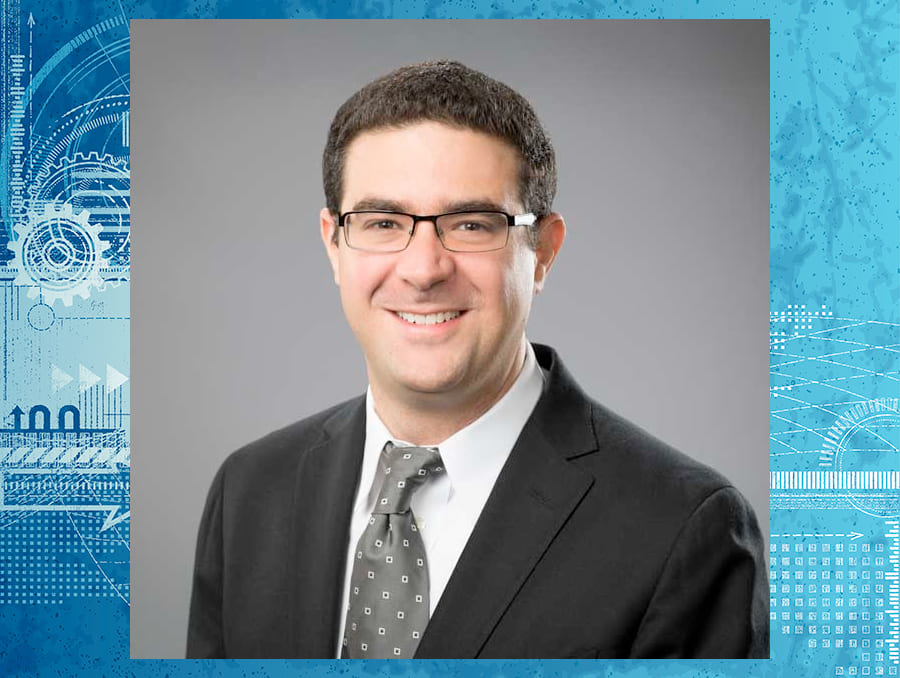Assistant Professor David Cantu of the Department of Chemical and Materials Engineering has received a CAREER award to advance research in the efficient and sustainable extraction of rare earth elements, which are vital to the production of modern technologies. The CAREER awards are presented through the early-career development program of the National Science Foundation.
Recently, Cantu was kind enough to share his thoughts on the research he will pursue with the CAREER award. In addition to its potential applications in the process of producing technological devices, the project will have educational implications both on campus and in Nevada high schools.
What is the goal of your CAREER project?
Rare earth elements need to be extracted as efficiently and sustainably as possible because they are key components in countless technological applications, such as medical contrast agents, lasers, guidance systems, smart phones and petroleum cracking catalysts. For all of these applications, rare earth elements are needed in a near purified form. The research goal is to resolve the structure of rare earth elements and extractants in solution and determine how extractants purify rare earth elements in solvent extraction. Using molecular simulation and spectroscopy, we will identify the connection between structures in solution with relative solubility (extent of separation), as well as between structures in solution with transport mechanisms (rate of separation). The educational goal is to include rare earth separation concepts into an undergraduate chemical engineering separation course. The outreach goal is to promote chemical engineering in Nevada high schools.
What inspired you to pursue this research?
Teaching the Separation Processes course to chemical engineering seniors at UNR led me to reflect on basic chemical separations concepts and how to explain them better. A significant part of this project is working with students to come up with lesson plans and better ways to clearly explain concepts in rare earth separation processes to UNR chemical engineering undergraduate students. Also, bacteria and plants are very selective in how they uptake specific elements from the environment, in part using very specific compounds that change their structure with acidity. In this research, we will study if compounds that can change their structure with acidity can become selective for particular rare earth elements, and if they are suitable for solvent extraction.
What does this award mean to you and for your work?
This award is a great opportunity for my research group to pursue a project, for five years, that will focus on very interesting fundamental science, and our expectation is that our findings will have an impact on solvent extraction, the key technology in the separation of rare earth elements. The award will also support our efforts to improve how concepts in chemical separations are taught to undergraduate students, as well as support outreach with Nevada high schools. I am very grateful to the NSF for the award, and to UNR for all the support.
What potential impact can the project have on society?
Most of the rare earth elements are separated and purified outside the United States, so improved separation technologies are needed to ensure a more reliable, sustainable supply of rare earth elements for the U.S.
What impact will the research have in your discipline?
The research is expected to result in determining connections between basic knowledge (structures in solution, mechanisms of transport) and properties (solubility, separation extent and rate) that are consequential to solvent extraction. Understanding structure – function connections can lead to significant advances in solvent extraction, as has been done in other fields; for example, crystallographic structures of proteins led to advances in enzyme engineering and structural knowledge of polymers led to improved soft materials. The challenge in solvent extraction is that structures in solution are very difficult to identify, so we will use molecular simulation techniques and spectroscopical measurements to resolve elusive solution structures and predict observable, meaningful properties.
Anything else you’d like to add?
There are lots of rare earth elements in the Western United States! In minerals, they are found mixed with many other elements. The rare earth elements are also known as lanthanides, which are named after lanthanum—the first rare earth element in the periodic table. Lanthanum is named from the Greek word lanthanein, which is “to lie hidden”.















